Zhihong Zhuang
Asymptotic Performance Analysis of Large-Scale Active IRS-Aided Wireless Network
Jun 05, 2023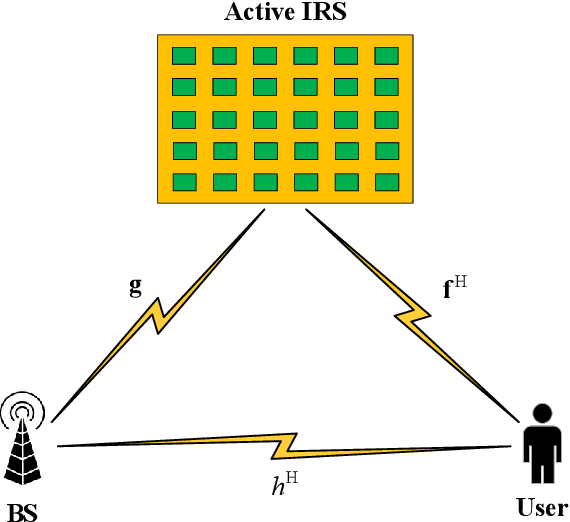

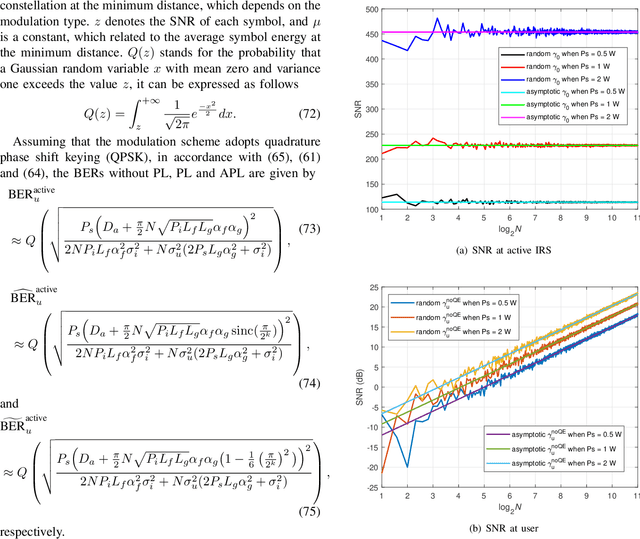

Abstract:In this paper, the dominant factor affecting the performance of active intelligent reflecting surface (IRS) aided wireless communication networks in Rayleigh fading channel, namely the average signal-to-noise ratio (SNR) $\gamma_0$ at IRS, is studied. Making use of the weak law of large numbers, its simple asymptotic expression is derived as the number $N$ of IRS elements goes to medium-scale and large-scale. When $N$ tends to large-scale, the asymptotic received SNR at user is proved to be a linear increasing function of a product of $\gamma_0$ and $N$. Subsequently, when the BS transmit power is fixed, there exists an optimal limited reflective power at IRS. At this point, more IRS reflect power will degrade the SNR performance. Additionally, under the total power sum constraint of the BS transmit power and the power reflected by the IRS, an optimal power allocation (PA) strategy is derived and shown to achieve 0.83 bit rate gain over equal PA. Finally, an IRS with finite phase shifters being taken into account, generates phase quantization errors, and further leads to a degradation of receive performance. The corresponding closed-form performance loss expressions for user's asymptotic SNR, achievable rate (AR), and bit error rate (BER) are derived for active IRS. Numerical simulation results show that a 3-bit discrete phase shifter is required to achieve a trivial performance loss for a large-scale active IRS.
Optimal Measurement of Drone Swarm in RSS-based Passive Localization with Region Constraints
Aug 08, 2022



Abstract:Passive geolocation by multiple unmanned aerial vehicles (UAVs) covers a wide range of military and civilian applications including rescue, wild life tracking and electronic warfare. The sensor-target geometry is known to significantly affect the localization precision. The existing sensor placement strategies mainly work on the cases without any constraints on the sensors locations. However, UAVs cannot fly/hover simply in arbitrary region due to realistic constraints, such as the geographical limitations, the security issues, and the max flying speed. In this paper, optimal geometrical configurations of UAVs in received signal strength (RSS)-based localization under region constraints are investigated. Employing the D-optimal criteria, i.e., minimizing the determinate of Fisher information matrix (FIM), such optimal problem is formulated. Based on the rigorous algebra and geometrical derivations, optimal and also closed form configurations of UAVs under different flying states are proposed. Finally, the effectiveness and practicality of the proposed configurations are demonstrated by simulation examples.
Two Low-complexity DOA Estimators for Massive/Ultra-massive MIMO Receive Array
Apr 20, 2022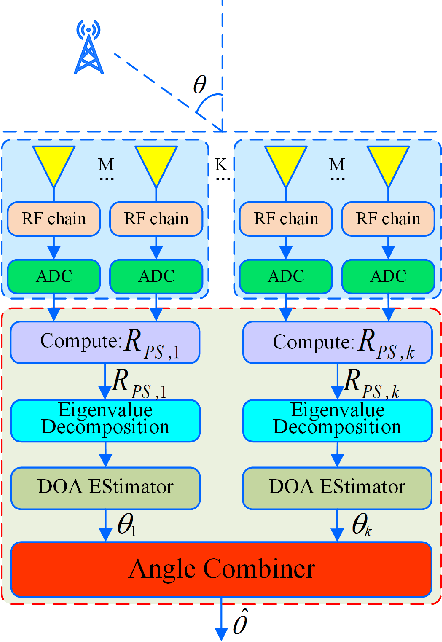
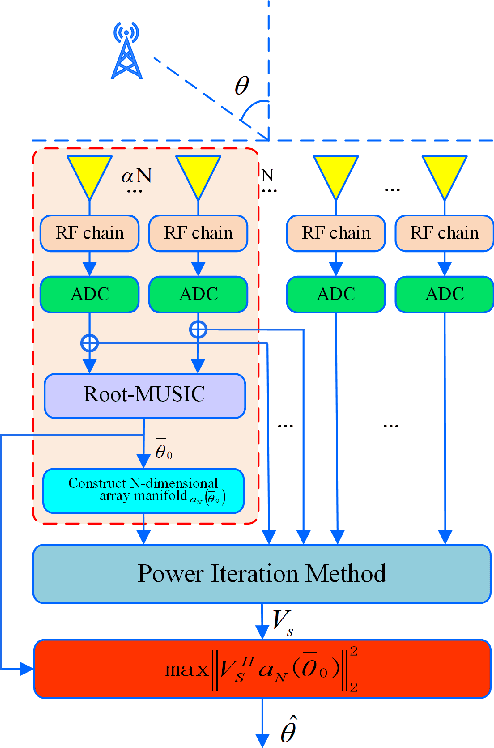
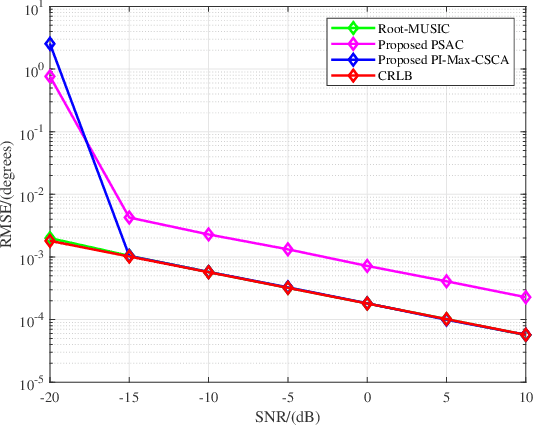
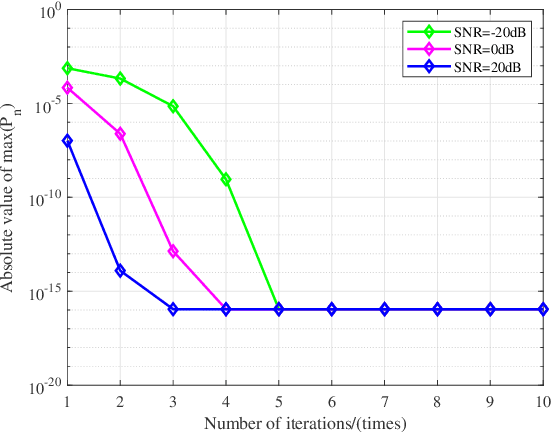
Abstract:Eigen-decomposition-based direction finding methods of using large-scale/ultra-large-scale fully-digital receive antenna arrays leads to a high or ultra-high complexity. To address the complexity dilemma, in this paper, two low-complexity estimators are proposed: partitioned subarray combining (PSAC) and power iteration max correlation successive convex approximation (PI-Max-CSCA). Compared with the conventional no-partitioned direction finding method like root multiple signal classification (Root-MUSIC), in PSAC method, the total set of antennas are equally partitioned into subsets of antennas, called subarrays, each subarray performs independent DOA estimation, and finally all DOA estimates are coherently combined to give the final estimate. In PI-Max-CSCA method, using a fraction of all subarrays to make an initial coarse direction measurement (ICDM), the power iterative method is adopted to compute the more precise steering vector (SV) by exploiting the total array, and a more accurate DOA value is found using ICDM and SV through the maximum correlation method solved by successive convex approximation.
 Add to Chrome
Add to Chrome Add to Firefox
Add to Firefox Add to Edge
Add to Edge